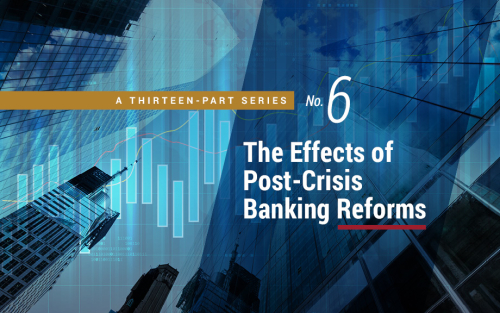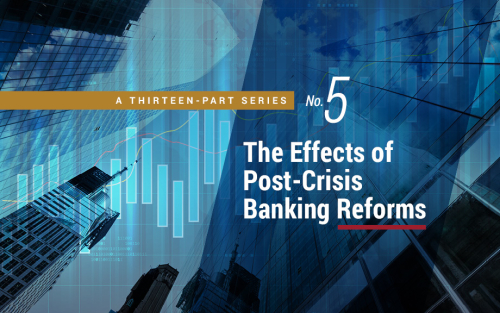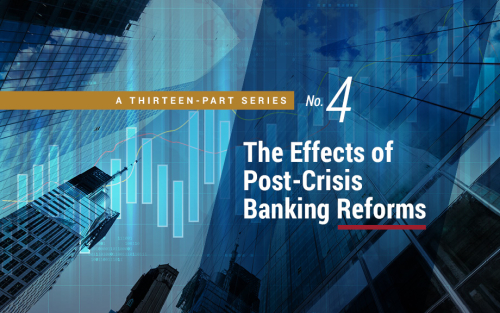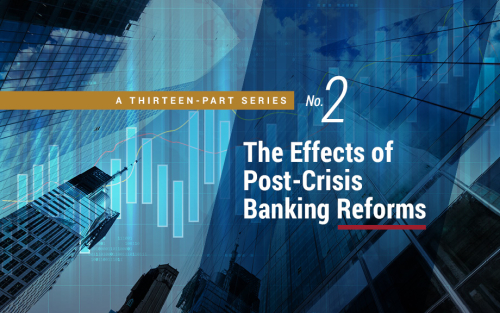Analyzing the Effects of CFPB Oversight

The Consumer Financial Protection Bureau (CFPB), created in 2011, is a key element of post-crisis U.S. financial regulation, as well as the subject of intense debate. While some have praised the agency, citing the benefits of consumer financial protection, others argue that its activities involve high compliance costs, increase uncertainty and legal risk, and ultimately reduce the availability of financial services for consumers. We contribute to this debate by investigating empirically whether the CFPB’s supervisory and enforcement activities have significantly affected the supply of mortgage credit, or had other effects on bank risk-taking and profitability
Changing Risk‑Return Profiles

Are stock returns predictable? This question is a perennially popular subject of debate. In this post, we highlight some results from our recent working paper, where we investigate the matter. Rather than focusing on a single object like the forecasted mean or median, we look at the entire distribution of stock returns and find that the realized volatility of stock returns, especially financial sector stock returns, has strong predictive content for the future distribution of stock returns. This is a robust feature of the data since all of our results are obtained with real-time analyses using stock return data since the 1920s. Motivated by this result, we then evaluate whether the banking system appears healthier today, and if recent regulatory reforms have helped.
The Cost of Regulatory Capital

Banks contend that equity capital is expensive and that an increase in capital requirements will adversely impact bank services, including the volume and cost of mortgages and corporate loans. For example, JPMorgan CEO Jamie Dimon said in 2017 that “It is clear that the banks have too much capital…and more of that capital can be safely used to finance the economy.” In a recent staff report, we compare the different treatments of short-term credit commitments under the Basel I and Basel II Accords to assess the effect of capital regulation on banks’ cost of capital. Our results suggest that banks are willing to pay at least $0.04 to reduce their regulatory capital by one dollar.
Resolving “Too Big to Fail”

Many market participants believe that large financial institutions enjoy an implicit guarantee that the government will step in to rescue them from potential failure. These “Too Big to Fail” (TBTF) issues became particularly salient during the 2008 crisis. From the government’s perspective, rescuing these financial institutions can be important to avoid harm to the financial system. The bailouts also artificially lower the risk borne by investors and the financing costs of big banks. The Dodd-Frank Act attempts to remove the incentive for governments to bail out banks in the first place by mandating that each large bank file a “living will” that details its strategy for a rapid and orderly resolution in the event of material distress or failure without disrupting the broader economy. In our recent New York Fed staff report, we look at whether living wills are effective at reducing the cost of implicit TBTF bailout subsidies.
Regulatory Changes and the Cost of Capital for Banks

In response to the financial crisis nearly a decade ago, a number of regulations were passed to improve the safety and soundness of the financial system. In this post and our related staff report, we provide a new perspective on the effect of these regulations by estimating the cost of capital for banks over the past two decades. We find that, while banks’ cost of capital soared during the financial crisis, after the passage of the Dodd-Frank Act (DFA), banks experienced a greater decrease in their cost of capital than nonbanks and nonbank financial intermediaries (NBFI).
The Effects of Post‑Crisis Banking Reforms

The financial crisis of 2007-08 exposed many limitations of the regulatory architecture of the U.S. financial system. In an attempt to mitigate these limitations, there has been a wave of regulatory reforms in the post-crisis period, especially in the banking sector. These include tighter bank capital and liquidity rules; new resolution procedures for failed banks; the creation of a stand-alone consumer protection agency; greater transparency in money market funds; and a move to central clearing of derivatives, among other measures. As these reforms have been finalized and implemented, a healthy debate has emerged in the policy and academic communities over the degree to which they have achieved their intended goals and the extent of any unintended consequences that might have arisen in the process.










 RSS Feed
RSS Feed Follow Liberty Street Economics
Follow Liberty Street Economics